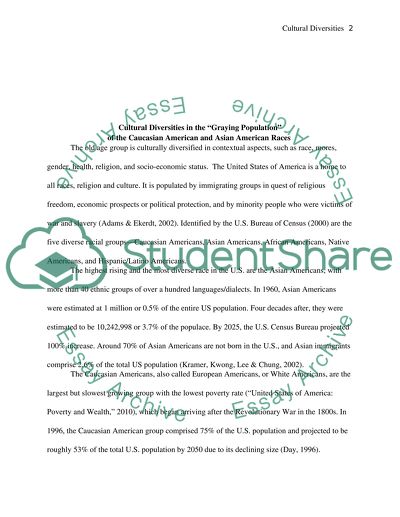Cite this document
(Cultural Diversities in the Graying Population of the Caucasian Amer Research Paper, n.d.)
Cultural Diversities in the Graying Population of the Caucasian Amer Research Paper. Retrieved from https://studentshare.org/culture/1572808-should-explore-the-care-that-each-of-the-major-american-subgroups-caucasian-american-african-american-hispaniclatino-american-and-asian-american-provide-for-their-respective-elderly-65-and-older-in-each-of-their-cultures
Cultural Diversities in the Graying Population of the Caucasian Amer Research Paper. Retrieved from https://studentshare.org/culture/1572808-should-explore-the-care-that-each-of-the-major-american-subgroups-caucasian-american-african-american-hispaniclatino-american-and-asian-american-provide-for-their-respective-elderly-65-and-older-in-each-of-their-cultures
(Cultural Diversities in the Graying Population of the Caucasian Amer Research Paper)
Cultural Diversities in the Graying Population of the Caucasian Amer Research Paper. https://studentshare.org/culture/1572808-should-explore-the-care-that-each-of-the-major-american-subgroups-caucasian-american-african-american-hispaniclatino-american-and-asian-american-provide-for-their-respective-elderly-65-and-older-in-each-of-their-cultures.
Cultural Diversities in the Graying Population of the Caucasian Amer Research Paper. https://studentshare.org/culture/1572808-should-explore-the-care-that-each-of-the-major-american-subgroups-caucasian-american-african-american-hispaniclatino-american-and-asian-american-provide-for-their-respective-elderly-65-and-older-in-each-of-their-cultures.
“Cultural Diversities in the Graying Population of the Caucasian Amer Research Paper”. https://studentshare.org/culture/1572808-should-explore-the-care-that-each-of-the-major-american-subgroups-caucasian-american-african-american-hispaniclatino-american-and-asian-american-provide-for-their-respective-elderly-65-and-older-in-each-of-their-cultures.


